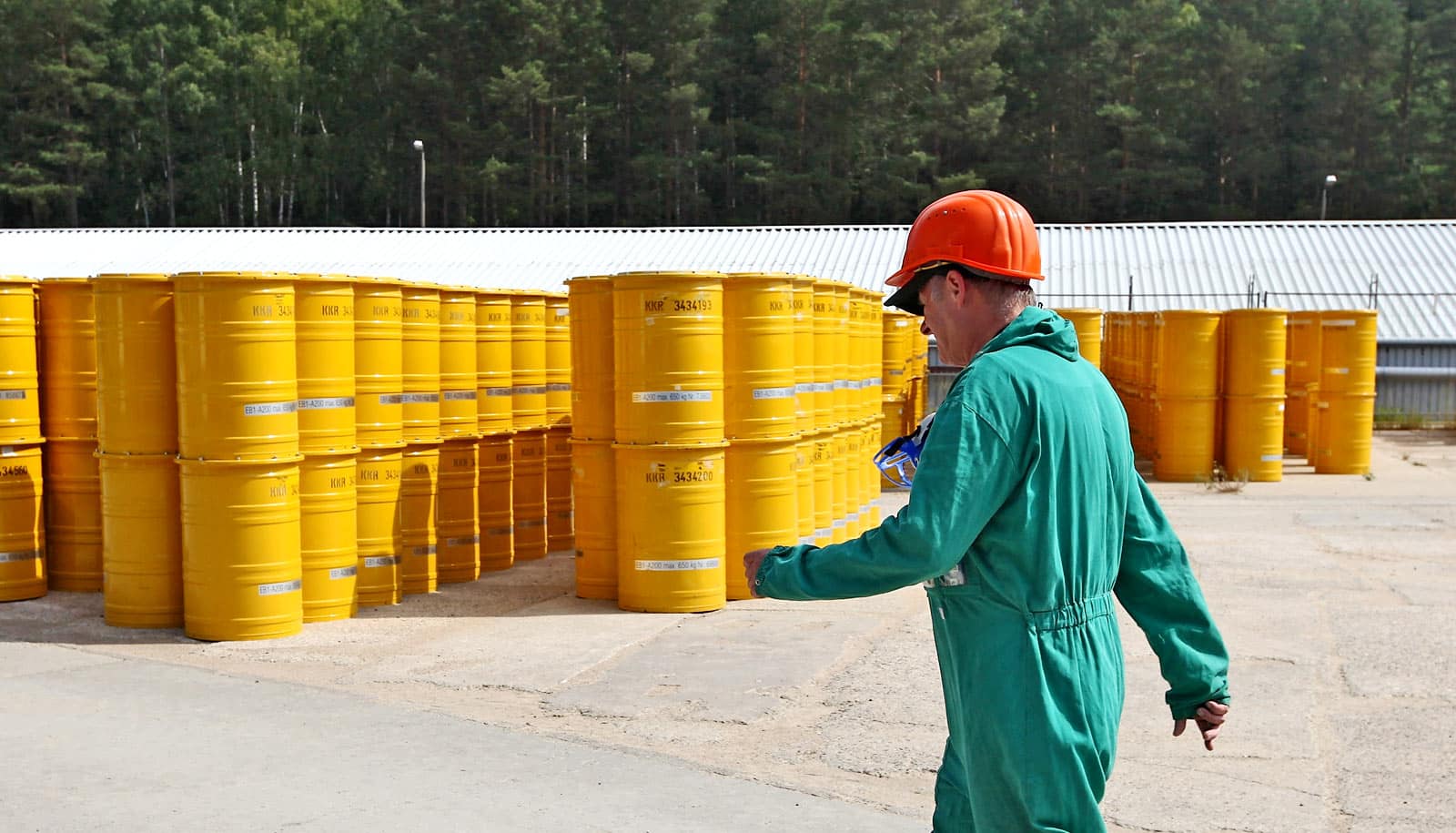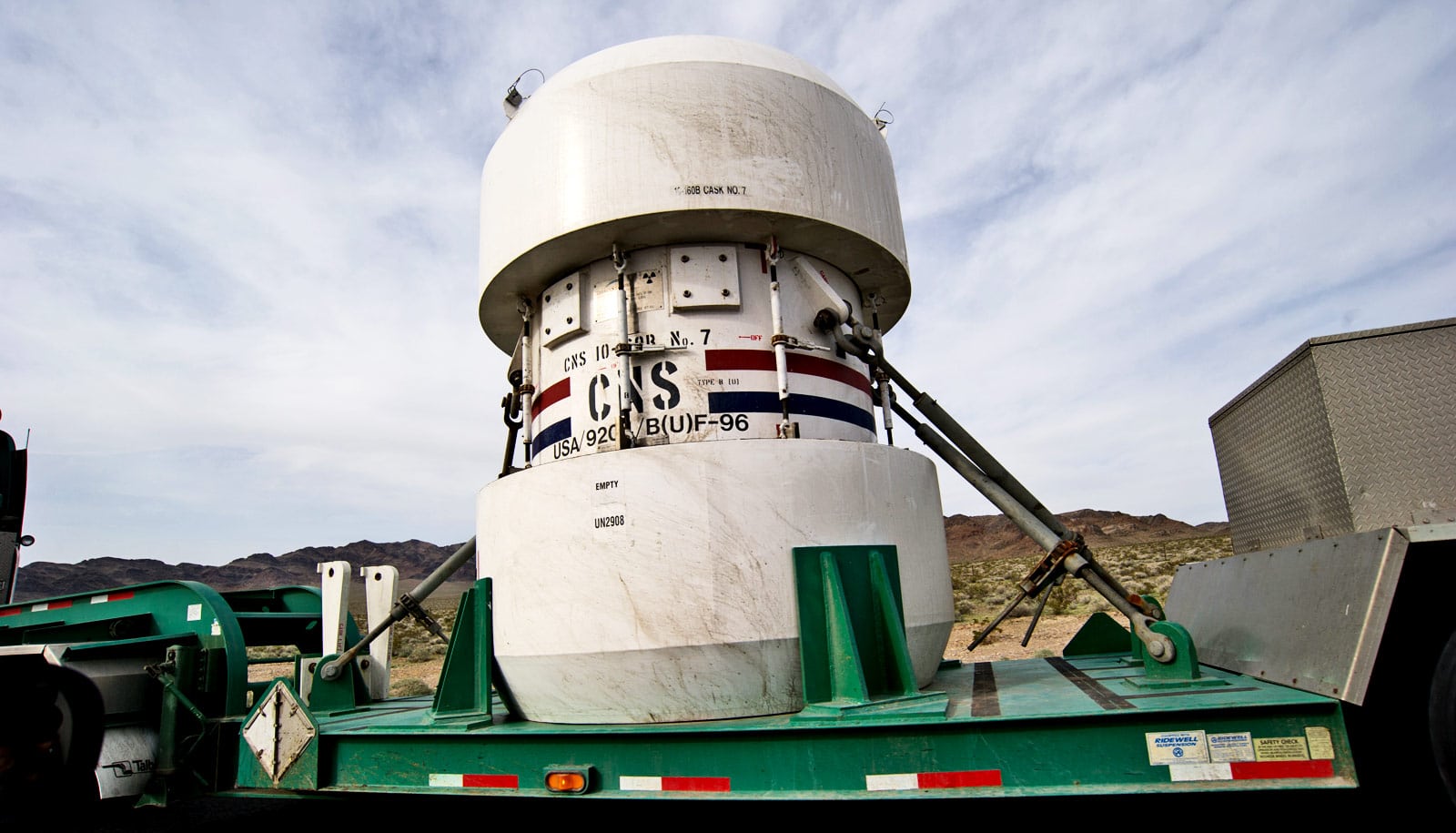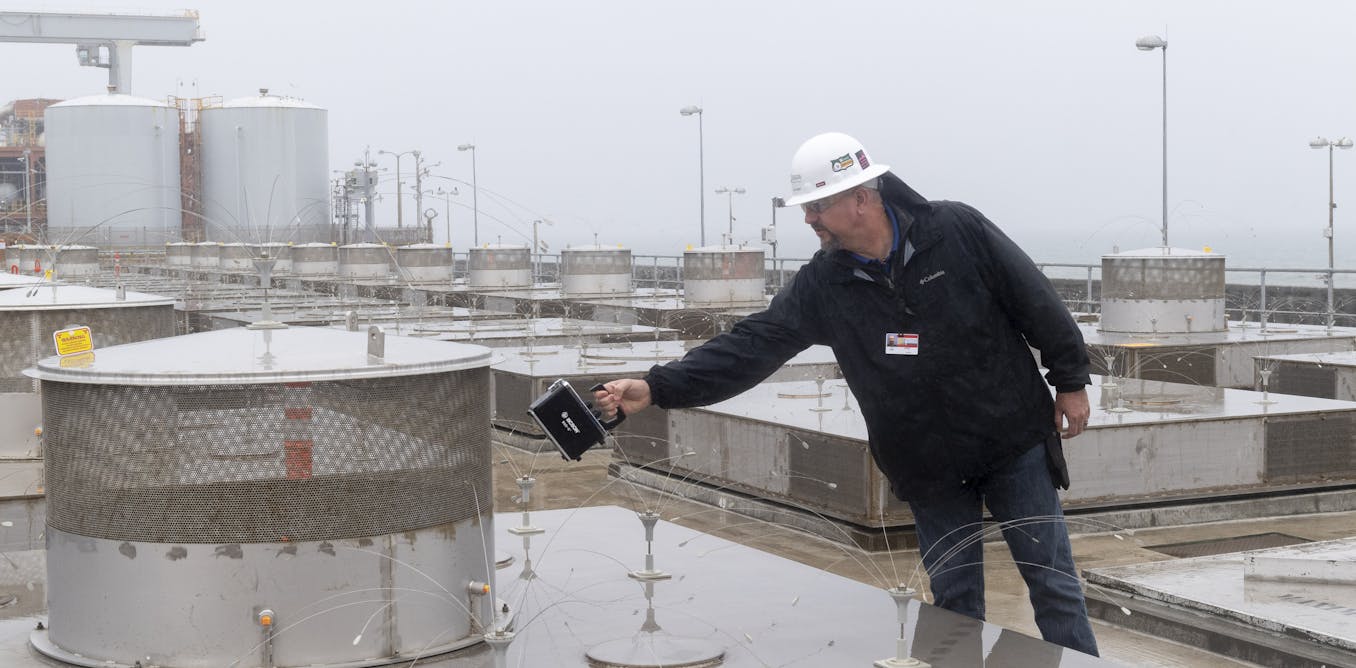
A worker walks by yellow barrels containing potentially radioactive material at the former Rheinsberg nuclear power plant on June 6, 2011 in Rheinsberg, Germany. (Credit: Getty Images )
Team develops new way to recycle nuclear waste
About 95% of the starting fuel rod used in nuclear reactors in the US gets discarded as nuclear waste. A new strategy offers a way to recycle it.
A new simple, proliferation-resistant approach offers a way to reduce nuclear waste, researchers say.
A typical nuclear reactor uses only a small fraction of its fuel rod to produce power before the energy-generating reaction naturally terminates. Engineers in the US dispose of the leftovers, including an assortment of radioactive elements such as unused fuel, as nuclear waste.
Although certain elements recycled from waste can go toward powering newer generations of nuclear reactors, extracting leftover fuel in a way that prevents possible misuse remains an ongoing challenge.
The new approach offers a way of separating out different components of nuclear waste. The one-step chemical reaction, which appears in the journal Industrial & Engineering Chemistry Research , results in the formation of crystals containing all of the leftover nuclear fuel elements distributed uniformly.
The researchers also note that the simplicity of the recycling approach makes the translation from lab bench to industry feasible.
“Our recycling strategy can be easily integrated into a chemical flow sheet for industrial-scale implementation,” says Johnathan Burns, research scientist in the Texas A&M Engineering Experiment Station’s Nuclear Engineering and Science Center.
“In other words, the reaction can be repeated multiple times to maximize fuel recovery yield and further reduce radioactive nuclear waste .”
Thermonuclear fission makes up the basis of energy production in nuclear reactors. In this reaction, a heavy nucleus, usually uranium, when hit by subatomic particles called neutrons, becomes unstable and tears apart into smaller, lighter elements. However, uranium can absorb neutrons and get progressively heavier to form elements like neptunium, plutonium and americium, before once again splitting and releasing energy.
Over time, these fission reactions lead to a buildup of lighter elements in the nuclear reactor . But roughly half of these fission products are deemed neutron poisons—they also absorb neutrons just like used nuclear fuel, leaving fewer for the fission reaction, eventually bringing the energy production to a halt.
Therefore, used fuel rods contain fission products, leftover uranium, and small quantities of plutonium, neptunium, and americium. Currently, these items, collectively considered nuclear waste in the United States, get stowed away in underground repositories because of their high radioactivity.
“Nuclear waste is a two-pronged problem,” Burns says. “First, almost 95% of the starting material of the fuel is left unused, and second, the waste we produce contains long-lived, radioactive elements. Neptunium and americium, for example, can persist and radiate for up to hundreds of thousands of years.”
Scientists have had some success with separating uranium, plutonium, and neptunium. However, these complex methods have had limited success at separating americium.
Furthermore, the United States Department of Energy requires the recycling strategy to be proliferation-resistant, meaning that plutonium , which can be used in weapons, must never become separated from other nuclear fuel elements during the recycling process.
To address the unmet needs of nuclear waste recycling, the researchers investigated if there was a simple chemical reaction that could separate all the desirable used nuclear fuel chemical elements together.
From earlier studies, the researchers knew that at room temperature, uranium forms crystals in strong nitric acid. Within these crystals, uranium atoms are arranged in a unique profile—a central uranium atom is sandwiched between two oxygen atoms on either side and share six electrons with each oxygen atom.
“We immediately realized that this crystal structure could be a way to separate out plutonium, neptunium and americium since all of these heavy elements belong to the same family as uranium,” Burns says.
The researchers hypothesized that if plutonium, neptunium and americium assumed a similar bonding structure with oxygen as uranium, then these elements would integrate themselves into the uranium crystal.
For their experiments, they prepared a surrogate solution of uranium, plutonium, neptunium, and americium in highly concentrated nitric acid at 60-90 degrees Celsius to mimic dissolving of a real fuel rod in the strong acid.
They found when the solution reached room temperature, as predicted, that uranium, neptunium, plutonium, and americium separated from the solution together, uniformly distributing themselves within the crystals.
This simplified, single-step process is also proliferation-resistant since plutonium incorporates within the uranium crystals.
“The idea is that the reprocessed fuel generated from our prescribed chemical reaction can be used in future generations of reactors, which would not only burn uranium like most present-day reactors but also other heavy elements such as neptunium, plutonium and americium,” Burns says.
“In addition to addressing the fuel recycling problem and reducing proliferation risk, our strategy will drastically reduce nuclear waste to just the fission products whose radioactivity is hundreds rather than hundreds of thousands of years.”
Additional researchers from Texas A&M contributed to the work. The United States Department of Energy provided funding.
Source: Texas A&M University
The post Team develops new way to recycle nuclear waste appeared first on Futurity .
Share this article:
This article uses material from the Futurity article, and is licenced under a CC BY-SA 4.0 International License. Images, videos and audio are available under their respective licenses.
Related Articles:
80,000 tons of nuclear waste are sitting in limbo
Dec. 17, 2018 • futurityHow and where is nuclear waste stored in the US?
April 14, 2025 • conversationLinks/images:
- https://doi.org/10.1021/acs.iecr.0c00381
- https://www.futurity.org/molecular-trap-nuclear-waste-1592582-2/
- https://www.futurity.org/deep-learning-nuclear-reactor-safety-1598922/
- https://www.futurity.org/nuclear-waste-storage-1096472-2/
- https://www.futurity.org/radioactivity-water-fukushima-omc-1342812-2/
- https://today.tamu.edu/2020/05/04/study-reveals-single-step-strategy-for-recycling-used-nuclear-fuel/
- https://www.futurity.org/nuclear-waste-recycling-2355402-2/
- https://www.futurity.org


